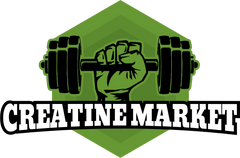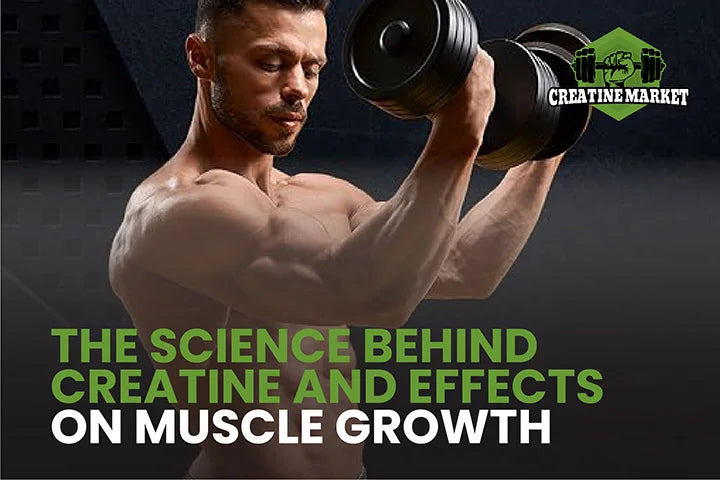High-intensity interval training (HIIT) has revolutionized the fitness industry, offering time-efficient workouts that deliver remarkable results. When combined with creatine supplementation, HIIT becomes even more powerful, enabling athletes to push harder, recover faster, and achieve superior training adaptations. Understanding the synergistic relationship between creatine and HIIT can help optimize your training outcomes.
Understanding the Science Behind Creatine and HIIT
Creatine plays a fundamental role in energy production during high-intensity exercise. During HIIT workouts, your body primarily relies on the phosphocreatine energy system for explosive movements and intense bursts of activity. Creatine supplementation increases your muscle's phosphocreatine stores, providing more readily available energy for these demanding intervals.
The ATP-PC System in HIIT
The ATP-phosphocreatine (ATP-PC) system is your body's fastest energy source, crucial for powering through intense HIIT intervals. When supplementing with creatine, you effectively increase your ATP-PC system's capacity, allowing for more powerful efforts during each high-intensity interval. This enhanced energy system leads to improved performance across multiple HIIT sets.
Benefits of Creatine for HIIT Performance
Creatine supplementation offers multiple advantages specifically beneficial for HIIT practitioners. The primary benefits include enhanced power output during intervals, improved recovery between sets, and increased training volume capacity. These improvements collectively contribute to better overall training adaptations and results.
Is Creatine Good For HIIT Workouts?
During HIIT workout sessions, maintaining power output across multiple intervals is crucial for training effectiveness. Creatine supplementation helps maintain higher power output throughout your workout by providing readily available energy for explosive movements. This sustained power leads to more effective training sessions and better performance adaptations.
Improved Recovery Between Intense Intervals
The brief recovery periods between HIIT intervals are critical for maintaining workout intensity. Creatine aids in faster phosphocreatine replenishment during these rest periods, allowing you to maintain higher performance levels in subsequent intervals. This improved recovery capacity enables more consistent effort throughout your entire HIIT session.
Optimizing Creatine Supplementation for HIIT
Maximizing the benefits of creatine for HIIT requires proper supplementation strategies. Understanding timing, dosage, and loading protocols can significantly impact your results. A well-planned supplementation strategy ensures optimal creatine availability during your HIIT workouts.
How Much Creatine Should I Take For HIIT Workouts
The recommended creatine protocol for HIIT practitioners begins with a loading phase of 20 grams daily, divided into four doses, for 5-7 days. Following this, a maintenance dose of 3-5 grams daily supports ongoing training demands. Timing your maintenance dose around your HIIT workouts can enhance its effectiveness.
Maximizing Results: Combining Creatine and HIIT
To optimize the synergy between creatine supplementation and HIIT, proper workout structuring is essential. This includes planning appropriate work-to-rest ratios, selecting suitable exercises, and implementing progressive overload principles that take advantage of creatine's benefits.
HIIT Workout Structure Optimization
Design your HIIT workouts to maximize the benefits of creatine supplementation by incorporating exercises that rely heavily on the phosphocreatine system. This typically involves intense bursts of 10-30 seconds, followed by appropriate recovery periods. Such structure allows full utilization of enhanced creatine stores while maintaining workout intensity.
Side Effects of Creatine
While creatine is generally safe and well-tolerated, understanding potential side effects and considerations specific to HIIT training is important. Proper hydration becomes particularly crucial when combining creatine supplementation with the demanding nature of HIIT workouts.
Hydration Requirements
The combination of HIIT and creatine supplementation increases hydration needs. Maintain adequate fluid intake before, during, and after workouts to support optimal performance and prevent dehydration. Pay special attention to hydration status during intense training phases.
How to Implement Creatine Into Your HIIT Workouts
Implementing creatine supplementation into your HIIT routine requires practical considerations. Start with a structured loading phase if time permits, or begin with a maintenance dose if immediacy is preferred. Monitor your body's response and adjust supplementation timing around your workout schedule.
Evidence-Based Results
Research consistently demonstrates the positive impact of creatine supplementation on HIIT performance. Studies show improvements in power output, work capacity, and recovery between intervals. These benefits translate to enhanced training adaptations and better overall results from your HIIT programs.
Conclusion: Optimizing Your HIIT Performance
Creatine supplementation represents a valuable tool for enhancing HIIT workout performance. By understanding the science behind this combination and implementing proper supplementation strategies, you can maximize your training results. Remember that consistency in both supplementation and training is key to achieving optimal outcomes.
When incorporating creatine into your HIIT routine, focus on proper dosing, timing, and hydration. Pay attention to your body's response and adjust accordingly. With proper implementation, the combination of creatine and HIIT can lead to significant improvements in your high-intensity training results.
References




